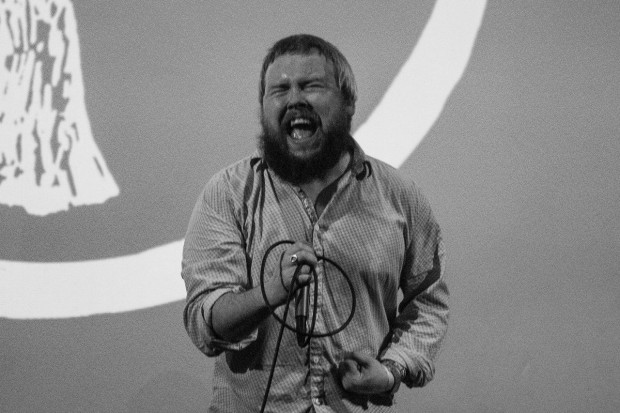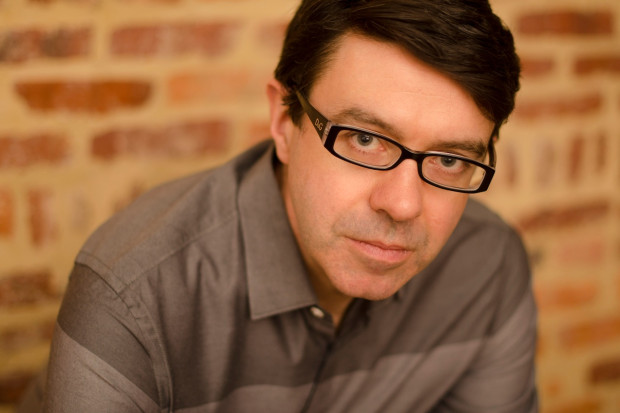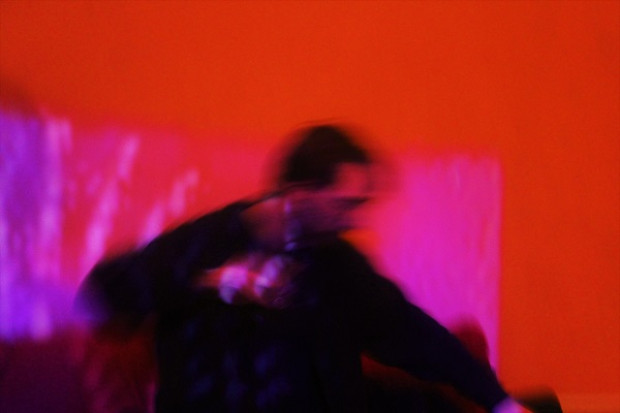The Quiet Club / Danny McCarthy
Tesla/
LISTEN hEAR
Farpoint Recordings
The brilliance of the Quiet Club, the Cork-based ‘entity’ of Danny McCarthy and Mick O’Shea, is best apprehended live. Their CD, Tesla, is fascinating and enjoyable, but all the more so after watching their performance at the Goethe Institute in Dublin. Watching and listening. Sight informing sound.
McCarthy sat on the floor, surrounded by stones, horse brushes wired to conduct electricity, old children’s toys reconfigured as instruments, detritus rescued and repurposed as beachcombers do. O’Shea sat surrounded by his self-made instruments, a conjuring magus. Some of the sounds used were straightforward – bells after all are bells, but mostly what is heard is mediated through electricity, as their CD title hints. Nikola Tesla is often called the patron saint of modern electricity and even the man who invented the twentieth century. The cover art, by O’Shea, shows the Wardenclyffe Tower, Tesla’s ambitious plan to transmit power globally without interconnecting wires.
Electricity is the medium used for the transfiguration of objects. Watching them perform, you learn that stones can sound like water, and plastic rain. The sounds created are futuristic and nostalgic; CD clicks and vinyl scratches; interglactic spaceships colliding and the sound of the Wardenclyffe Tower being demolished before becoming operative. Their abstract sounds create a figurative soundscape: birds are released by these magicians.
McCarthy also launched LISTEN hEAR, a retrospective of his life as a sound artist. A beautifully produced book and CD combination, it documents his more than thirty years of thoughtful engagement with his environment, creating psychogeographical soundscapes. In his introduction, David Toop says of McCarthy that he was ‘moved by his engagement with the past, with his own potent memories and with Irish history and myth and by his fierce and gentle means of understanding his place in it all, which is at once ancient and modern.’
The CD is a reauthoring of installation pieces. Site-specific pieces have been thoughtfully reinterpreted. For example, Sound (In)Sight was created from found sounds McCarthy recorded during a residency he had with the Irish Guide Dogs for the Blind association. Originally, it was experienced using eight channels from four CD players. Here, it moves from left channel to right, retaining its power as a meditation on hearing.
This is a beautiful collection. Echoes from an Abandoned Schoolhouse begins with birdsong, children’s playground voices, the ringing of a hand bell calling them to class. Then children reciting their lessons, overlaid with the words of Pádraig Pearse; the echoes of a typewriter sound like gunfire. The Birdcages of Dublin, wittily here in a radio edit, possesses a grimy rhythm that feels like an adventure in tuning an AM radio late at night. Another Gong for Mr Beckett, inspired by a four-second sample of Beckett sounding a dinner gong, is wittily expanded. Do not ask for whom the gong tolls: just be glad that McCarthy’s appealing.
Published on 1 June 2009
Seán Ó Máille is a freelance critic, photographer and full-time secondary teacher in Dublin.














